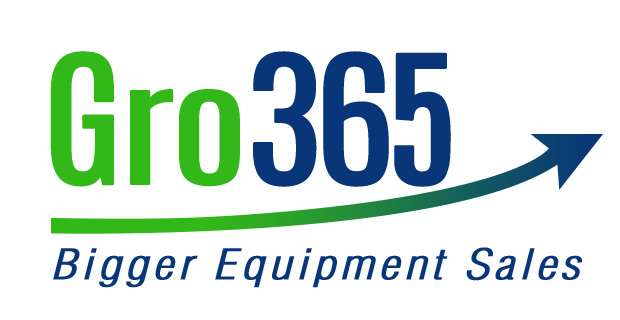- Average Deal Size: The average dollar value of your sales invoices
- Number of Sales Leads: The total number of sales opportunities available to your equipment and aftermarket salespeople each year
- Average Win Rate: The ratio of leads won to the total number of leads
As we analyzed the results of our research, we identified a significant problem: Most distributors were placing too much attention on increasing the number of sales leads in the pipeline while ignoring the other two factors, which contribute just as much to revenue growth.
So, to highlight the relationship between these key variables, we developed a formula: The Revenue Growth Formula, which can be expressed as follows:
How Does It Work?
To understand how the Revenue Growth Formula works, let’s look at a simple illustration:
This distributors sales organization has 20 salespeople each with an average annual equipment quota of $1,500,000, for a total annual equipment quota of $30,000,000.
Over the year, the average deal size is $12,000, the sales organization works a total of 8500 sales leads with an average win rate of 30%. The average monthly equipment sales are $2,550,000, around 30,600,000 that year.
Annual Sales — $12,000 x 8500 x 30% = $30,600,000
But what if by applying the Revenue Growth Formula over the next year the distributor’s sales organization increases its sales performance across all three levels by just 5%? That may not sound like a lot, until you evaluate the numbers.
- The average deal size grows to $12,600
- Now 8925 leads are in play
- The win rate increases from 30% to 31.5%
Annual Sales– $12,600 x 8925 x 31.5% = $35,423,325
By increasing the average deal size, the number of leads, and the win rate by just 5%, that pushes the distributor’s monthly growth to a bit more than $2,950,000 per month, which is an annual growth increase of about 16%.
Right about now, you’re probably thinking a revenue increase of 16% seems impossible. But rest assured, moving any of these 3 sales factors by just 5% is not only realistic and manageable, it’s also an achievable goal for your distributorship.
Improving revenue growth requires a process approach, and understanding that change management must be ongoing, rather than a once-off project. The Revenue Growth Formula starts with a benchmark, (your baseline, so to speak), to establish where you are and where you want to arrive, and in measuring your actual progress towards your long-term growth objective.
Now that you’ve seen how the formula works, you can see the impact a small increase can have. Imagine what that could mean for your distributorship!
We specialize in helping distributors increase their revenue growth to rates even higher than the one in this illustration– and we can do it for you, too. If you are ready to have a conversation about how we can put our Revenue Growth Formula to work for you and grow your revenue, please click here.
In Step 2, we’ll explain how working together, we can increase your average deal sizes over the next twelve months by at least 5%.


